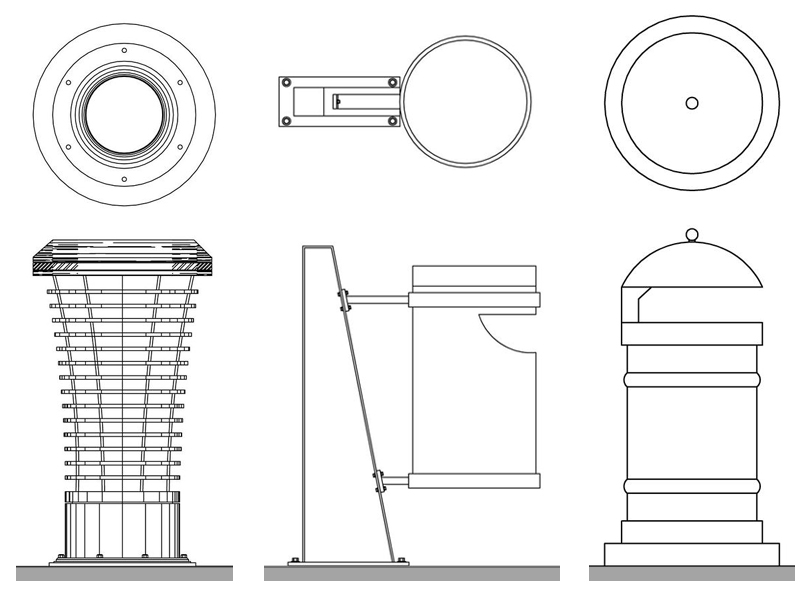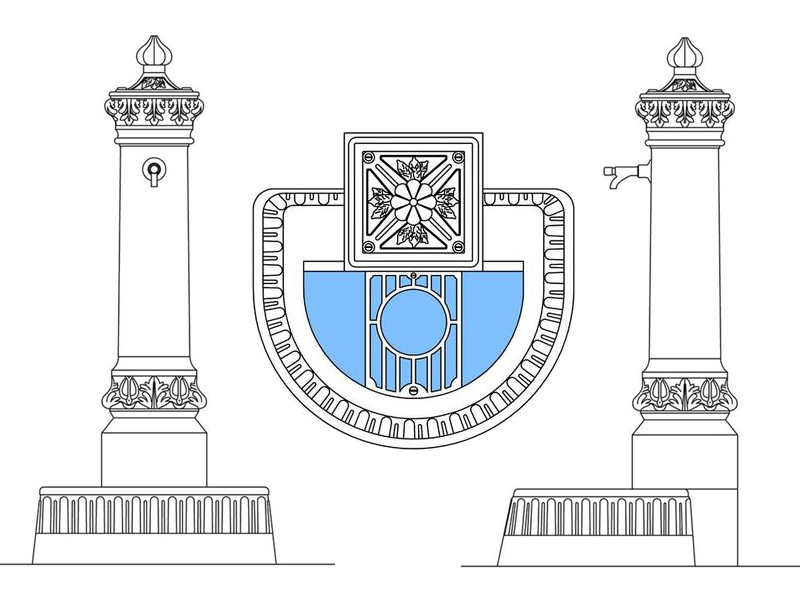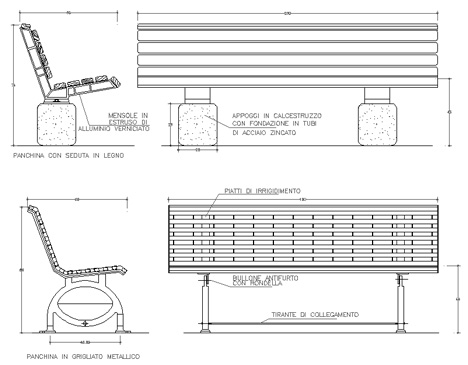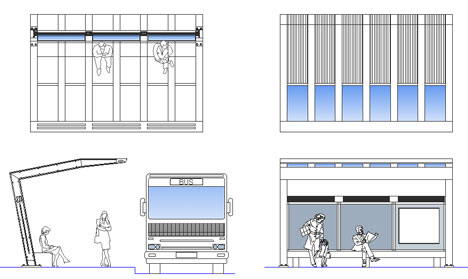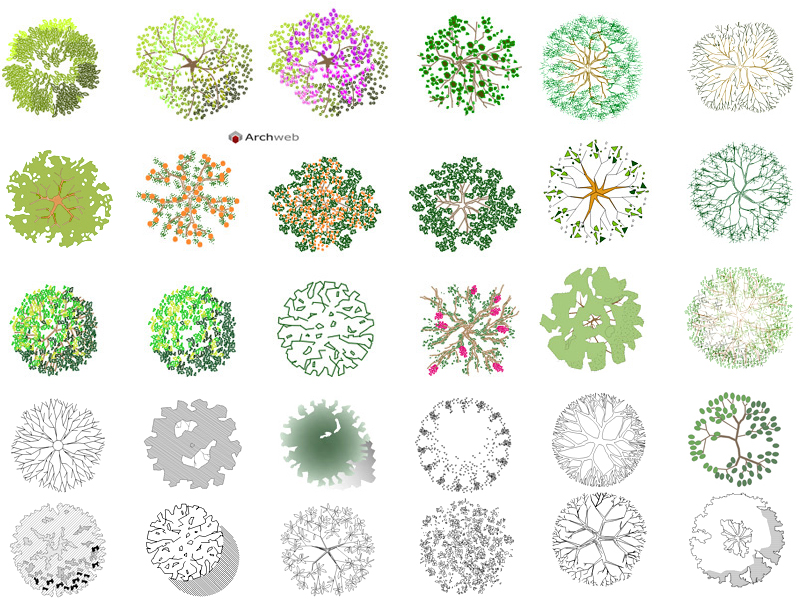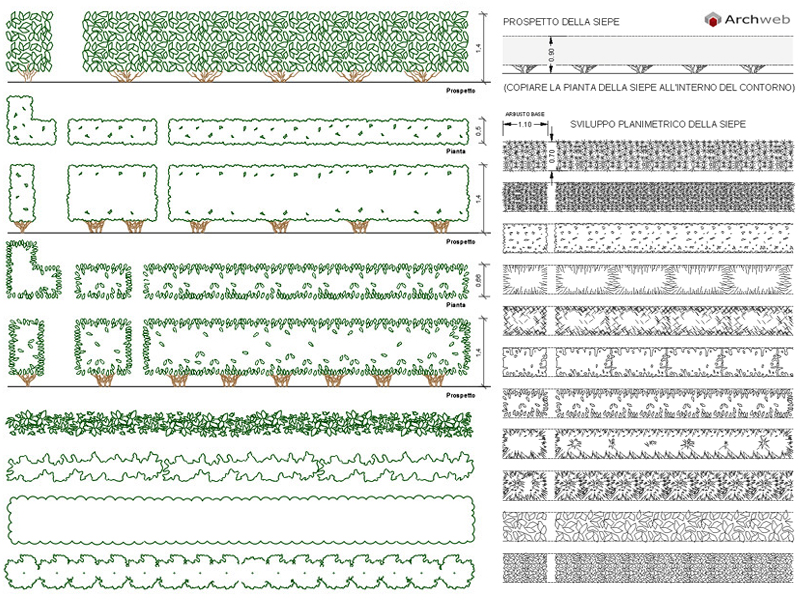Dog area in urban public park
Key elements to create a functional and welcoming dog area
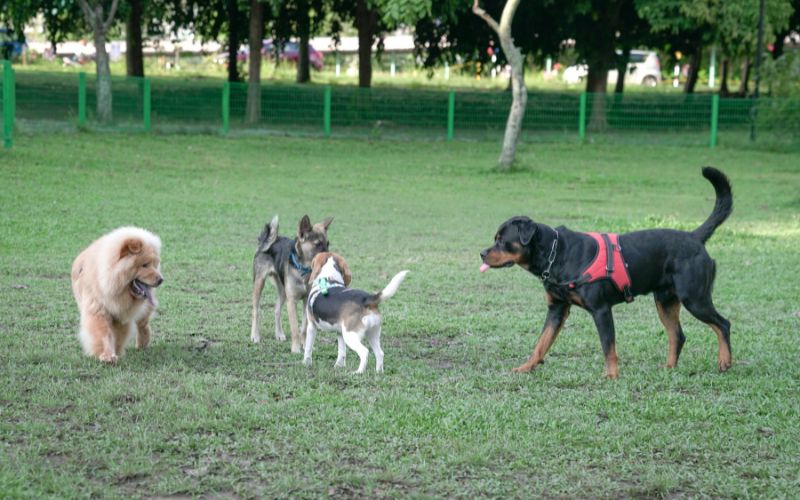
More and more often, at least one area reserved for dogs is created in urban public parks. But how to design and equip these spaces in the best way? And what makes dog areas truly welcoming and functional places?
From the shade to the games, passing through the fountains: everything must be perfectly designed to allow a harmonious and safe coexistence between animals and owners. Below we will discover how to optimally set up a space dedicated to dogs, ensuring safety, fun and hygiene. From the most suitable equipment to landscaping considerations, we will explore how to create an ideal space designed specifically for our four-legged friends.
Importance of dog areas in urban parks
Dog-friendly areas within parks play a vital role in providing a safe and pet-friendly space in urban areas. Dogs, being active animals, need open spaces to run, play and socialize with other dogs. Furthermore, these areas allow dog owners to meet and exchange useful advice and information, creating a community of animal lovers.
Dog areas in urban parks also offer benefits for the health and well-being of the animals themselves. The opportunity to exercise and play outdoors helps keep our four-legged friends in good physical and mental shape. Additionally, access to a wide range of outdoor sensory stimuli can help reduce dogs’ stress and anxiety, improving their overall quality of life.
For these reasons, it is essential that the dog area is adequately equipped and designed to meet the needs of the animals and their owners.
Understanding the needs of dogs in urban environments
Before you begin designing a dog area in a municipal park, it is important to understand the specific needs of these animals in urban environments. Cities can present unique challenges for pets, such as traffic noise, the presence of unfamiliar people, and a lack of open space.
A key element to consider is access to adequate shade. During hot days, dogs can suffer from overheating and dehydration. Therefore, it is important to provide shaded areas within designated dog spaces, such as trees or covered structures, so that dogs can rest and cool off when they need it.
Another important consideration is the presence of games and equipment to stimulate the physical and mental activity of dogs. These animals need opportunities for play and interaction to maintain good health and to avoid the onset of unwanted behaviors. Installing games such as agility courses or food hunting games can help dogs stay active and engaged during their park visit.
Finally, it is essential to ensure an adequate supply of drinking water within dog parks. Dogs can become dehydrated quickly, so it’s important to provide water fountains or containers so they can drink during their park visit. Furthermore, it is important to educate dog owners on the importance of their four-legged friends staying hydrated during outdoor activities, as well as respecting hygiene rules.
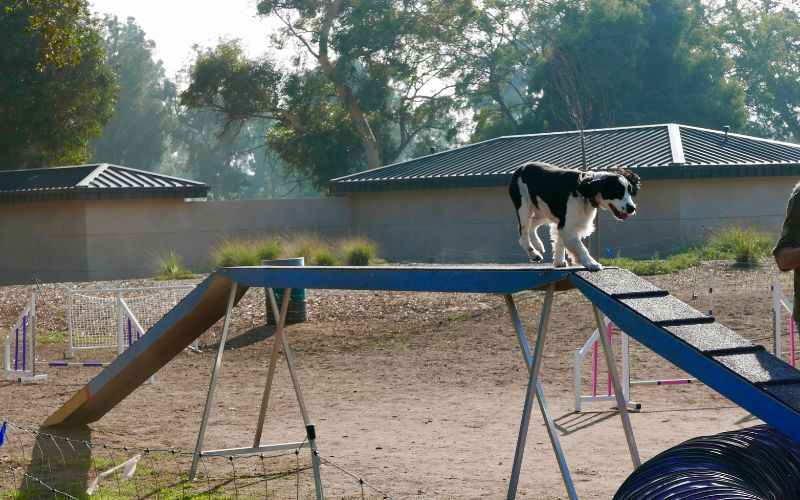
Designing a dog-friendly urban park
Designing a dog-friendly urban park requires a number of considerations to ensure the area is suited to the needs of dogs and their owners. Below are some tips for designing a dog-friendly urban park:
- Space planning: consider the size of the area, the layout of structures and the presence of natural elements, such as trees and shrubs, that can provide shade and privacy.
- Separation of areas: if the space dedicated to dogs is large, it is advisable to divide it into different sections for dogs of different sizes or for dogs that need to be kept separate. This allows pets to socialize safely and offers options for dog owners with different needs.
- Clear signs: install clear signs to indicate the rules and regulations to be respected. This helps dog owners understand expectations and ensure a safe and respectful environment for everyone.
- Furnishings and equipment: provide benches, tables and waste bins. This provides comfort to the owners and helps keep the area clean and tidy.
- Games: equipping the dog area with educational and recreational paths can be more fun for our four-legged friends. We can install tunnels, slalom and obstacle courses, perhaps of variable height.
Designing a dog-friendly urban park requires careful planning and consideration of the needs of dogs and their owners. The ultimate goal is to create a welcoming and safe space where dogs can enjoy outdoor activities in the company of their owners.
Essential services for dog parks in urban parks
Dog parks in urban parks must provide a number of essential services to ensure the comfort and safety of dogs and their owners. Below are some of the essential amenities that should be present within a dog park:
- Dog drinking fountains: drinking fountains are essential to ensure an adequate supply of drinking water during your visit to the park. Drinking fountains should be strategically positioned throughout the dog area to facilitate usability.
- Waste Containers: it is essential to provide waste containers within the area so that owners can easily dispose of their dogs’ waste. Waste containers should be placed in strategic locations and should be regularly emptied to keep the area clean and hygienic.
- Waste bag dispensers: next to waste containers, it is advisable to install waste bag dispensers. This allows dog owners to properly dispose of their dog’s waste in a hygienic and environmentally friendly way.
- Shaded Area: as mentioned above, it is important to provide shaded areas within the dog run so that pets can rest and cool off during hot days. These shaded areas can be created using trees, covered structures or tents.
- Information Signs: install information signs within the dog park to provide instructions and warnings to owners. This helps maintain a safe and respectful environment for all users of the dog park.
Providing these essential services within dog parks in city parks helps ensure the comfort and safety of dogs and their owners during park visits.
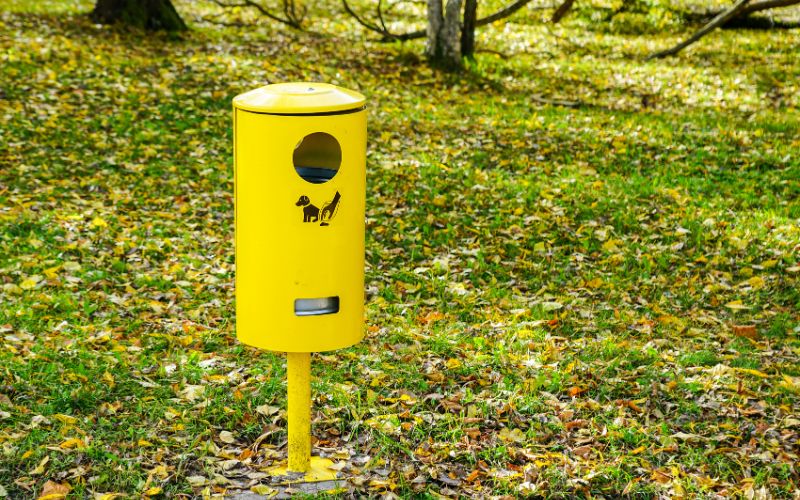
Safety measures for dog parks
Safety is a fundamental element in the design and setup of dog parks in cities. Both dogs and their owners must be able to enjoy the area safely and without risk. Below are some measures that should be taken to ensure safety:
- Adequate fencing: the dog area must be securely fenced to prevent escapes or access by unauthorized dogs. The fence must be high enough and sturdy, with no gaps or cracks for the dogs to fit through.
- Pedestrian gate: dedicated to park users. The opening must be free to allow unrestricted access and egress.
- Driveway gate: reserved for park staff who can also access with motorized vehicles. The gate must be equipped with a lock or closed with a chain and padlock.
- Safety Signs: install safety signs within the dog park to provide instructions and warnings to owners. Signage should include information on proper dog behavior and area rules.
- Regular monitoring: it is important to monitor the area regularly to ensure compliance with the rules and the safety of all users. Park staff or volunteers may be responsible for this activity.
- Dog Owner Education: inform and educate dog owners about the importance of respecting area rules and maintaining control of their four-legged friends. This helps prevent aggressive or dangerous behavior from dogs within the area.
Taking these safety measures helps create a safe and pleasant environment for dogs and their owners in urban dog parks.
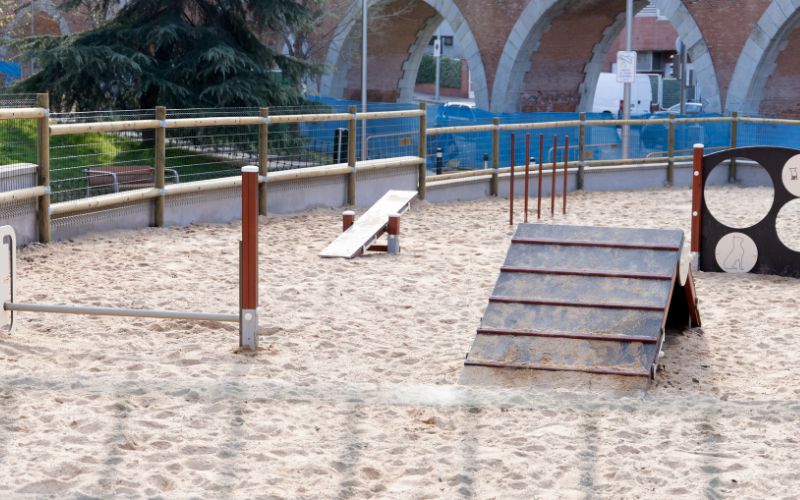
Sustainable practices for dog-friendly urban parks
When designing a dog-friendly urban park, it is important to adopt sustainable practices to reduce the area’s environmental impact and promote a healthier environment for dogs and their owners. Below are some sustainable practices that can be adopted in dog-friendly urban parks:
- Use of ecological materials: use materials that respect environmental balance for flooring and equipment. This includes using recycled or biodegradable materials, such as sustainably sourced wood.
- Water conservation: take steps to conserve water, such as installing energy-efficient irrigation systems or using native plants that require less water.
- Waste management: promote proper waste management within the dog park, by installing recycling bins and educating dog owners on the importance of recycling and waste reduction.
- Use of renewable energy: consider the use of renewable energy for lighting and powering vehicles and equipment for park maintenance.
- Creating habitat for wildlife: Include elements in the area design to create habitat for wildlife, such as installing bushes and planting flowers that attract insects and birds.
Adopting these sustainable practices in dog-friendly urban parks helps create a healthier environment for dogs and their owners and reduces the area’s overall environmental impact.
Legal considerations and rules for dog parks
When designing and setting up a dog park in a city park, it is essential to consult local authorities and comply with applicable regulations.
Below are some of the rules that commonly apply in public dog parks:
- Usage rules: establish clear usage rules for the area, such as keeping dogs under control or removing faeces. Furthermore, owners can be required to intervene in case of problems. These rules must be visible through clear signs within the area.
- Dog owner responsibilities: establish that dog owners are responsible for their animals’ behavior and must keep their dogs under control at all times.
- Opening and closing times: establish opening and closing times for the dog park to ensure appropriate use and to facilitate maintenance of the area.
- Access limitations: for example, it can be established that only vaccinated and microchipped dogs, as well as clean and in good health conditions, can enter.
Clear and properly communicated rules allow the park manager to avoid legal problems and ensure correct and safe use of the dog area.
Conclusions: create a welcoming and safe space for urban dogs
Dog parks in urban parks play a vital role in providing a safe and dog-friendly space in urban areas. From planning and design to setup and maintenance, many aspects must be taken into consideration to create a welcoming and safe space.
Understanding the needs of dogs in urban environments, adopting sustainable practices and respecting the rules are all key to creating functional and welcoming dog areas.
When dog areas are designed and equipped in the right way, four-legged friends and their owners can enjoy a safe and pleasant environment, promoting a better quality of life for everyone.
Cover photo: sinseehophotos on Canva



























































